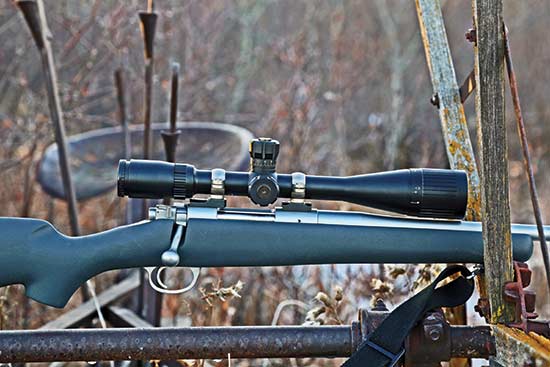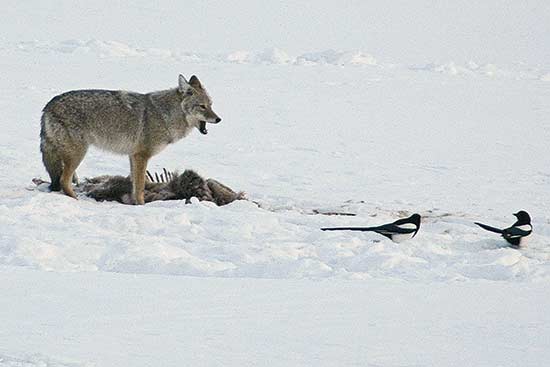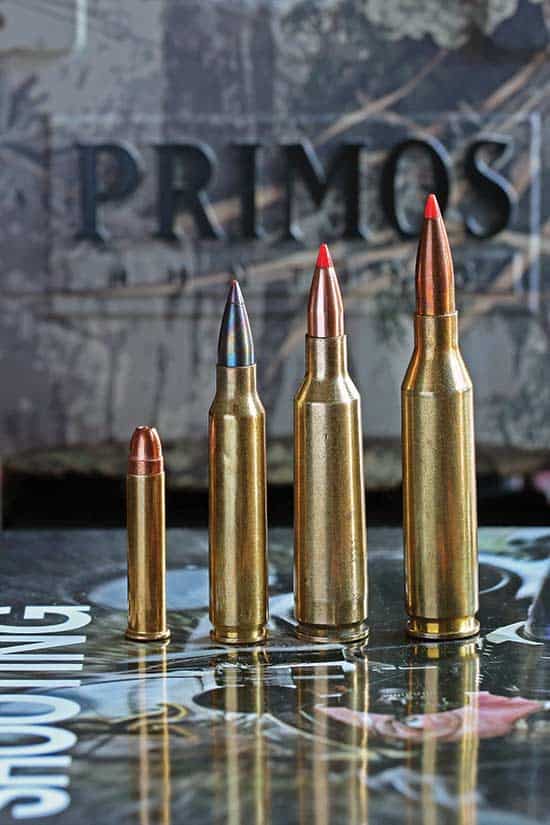Coyote Medicine
Popular Cartridges Excel At “Ironing Out” These Vexatious Varmints
A very practical reason for hunting coyotes is for the pelts. Coyote fur is great for trim on winter clothing, or for complete items of cold weather wear—warm, soft, and beautiful. Demand ebbs and flows, with international markets a big factor. Currently prices are down but even so pelts can bring $45 to $80, maybe over $100 for a really nice one.
Preferably you should shoot coyotes in winter when the fur is at its best. Preparing the pelts takes more time and patience than I want to provide, so I take any coyotes I shoot to an acquaintance who takes care of it.
Cartridge and rifle choices depend on hunting method. A mature male coyote will weigh around 35 pounds. With their long winter fur they look a lot larger than they actually are. Occasionally I’ve come across coyotes which have lost much of their fur to mange, and have always been struck by how small the body appears.
Back in the ’70s several friends were really into shooting coyotes for the fur, and making pretty good money at it. Avoiding exit holes and the resulting drop in value was a big deal. Their preferred solution was to use light-for-caliber bullets, wind them up as fast as they could, and hope the bullet would disintegrate in the body without exiting.
Dave loves the light weight of his Kimber Montana in .223 with a Bushnell Elite Tactical 5-15×40 in
Leupold Dual Dovetail mounts.
Dave enjoys using his Rem. 700 SPS in .243, Leupold 6.5-20×50 scope and Legacy Intl. box mag.
system for nailing coyotes. The Primos electronic call with remote is handy too!
Dave isn’t sure if this deer was killed by coyotes or by hunger, but between coyotes and magpies
nothing will be left but a few bones. This is an average size coyote./em>
For these fellows, the starting point was the .22-250 Rem with 40- to 50-grain bullets. The .220 Swift had a following after Ruger resurrected it in the 77V. Those wanting even more velocity went to wildcats such as the .22-250 Ackley Improved, or versions of the .22-243 which pushed the limits of what lighter bullets would stand without flying apart in flight.
The .17 Rem had a brief vogue in the ’70s but seems to have faded. Currently the .204 Ruger has a following among coyote shooters. I’ve never shot a coyote with the round, as the .204 I’ve owned for years is a heavy-barrel Ruger 77. Coyote hunting can sometimes involve long walks in the snow. In a lighter, more portable rifle I can’t see why it wouldn’t do well.
Longer shots can be tricky both because of the small size, and the fact coyotes are restless and don’t stay still long, especially out in the open. I remember using a mouth-blown call long ago and evidently not doing a very good job with it, as I saw an approaching coyote sit down at about 500 yards, suspicious and wary. After a few seconds he decided he had business elsewhere. About the same time a red fox practically ran over my boots.
Dave’s Preferred Coyote Busters
These cartridges have the advantage of being available at about any small-town hardware store in the country. They include (from let to right) the .22 Magnum, CCI 40-grain HP, .223 Rem with 55-grain Hornady V-Max, moly coated, .22-250 Rem with 55-grain Hornady V-Max and .243 Win with Hornady 87-grain V-Max.
.22 Magnum
For targets of opportunity within 100 yards, I most often have a .22 Magnum in the pickup or Ranger. My current favorite is a Ruger American Compact model with a Redfield 3-9×40 scope.
I mainly use CCI 40-grain hollowpoints and with solid chest shots coyotes are mostly dead in their tracks or after a very few steps. The bullets don’t always exit, even on broadside shots, and when they do the exit hole isn’t too hard to repair.
.223 Remington
The .223 I consider the best all-around varmint cartridge, though varmints are by no means the limits of its ability. When calling, it is not uncommon for several coyotes to show up. I’ve never seen more than two or three but a friend says he had six coming in on one occasion. After the first shot any further shots will be on running animals. Quite a few callers are going to a semi-auto .223 for such shooting. ARs are especially popular as they can be very accurate for the occasional longer shot, and flat-topped versions with Picatinny rails are easy to scope.
.243 Winchester
For coyotes under a wide range of conditions, from close range to long, in windy weather or calm, the .243 Win will handle most any situation, not to mention it is also a fine deer/antelope cartridge. Most hunters seem to prefer 55-grain bullets which can be loaded to around 3,900 fps depending on barrel length. Such bullets have fairly modest ballistic coefficients but hide hunters will put up with reduced long-range capability in return for reduced chances of an exit hole.
I very much like the Hornady 87-grain V-Max in the .243. It has always given excellent accuracy along with good retained velocity and resistance to wind drift at longer ranges. On the other hand, you can pretty much count on the bullet exiting.
.22-250 Remington
I saved what I consider the best for the last. The .22-250 is one of the all-time great cartridges, and it deserves to be. As a coyote rifle it has a comforting surplus of power along with flat trajectory, mild recoil, superb accuracy, and availability in a wide array of excellent rifles. Factory ammunition is almost invariably accurate and of high quality, moderately priced and available everywhere.







